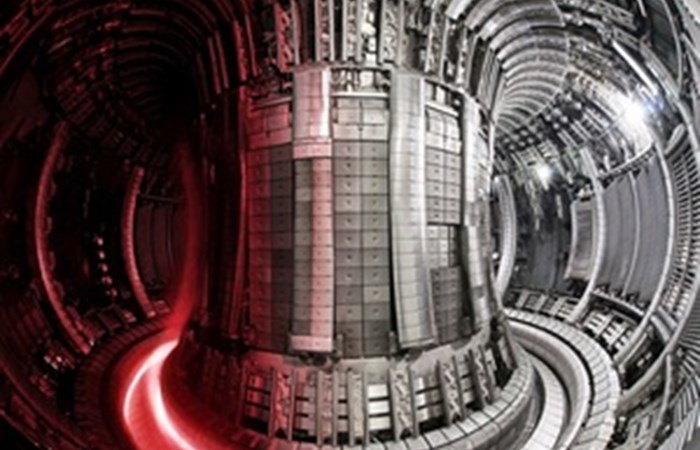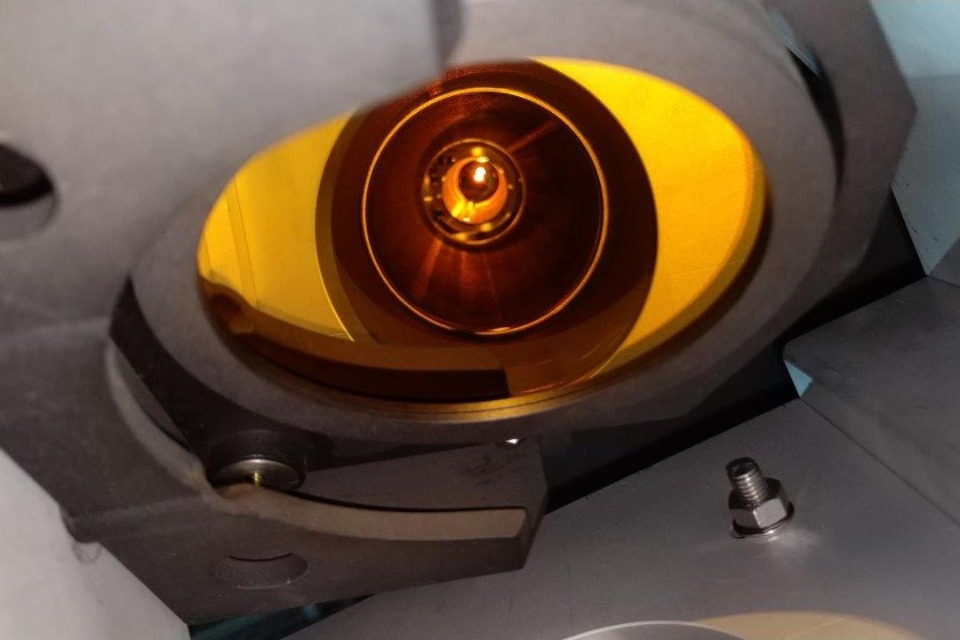Uk Atomic Energy Authority

Fusion energy scientists and engineers at the Joint European Torus (JET) have developed a world leading method involving lasers to release and measure tritium trapped in fusion energy tokamaks.
Most approaches to creating commercial fusion favour the use two hydrogen isotopes deuterium and tritium. Their use is preferred in tokamaks like JET and in future fusion powerplants.
Deuterium is plentiful and can be extracted from seawater. Tritium, a radioactive isotope of hydrogen, is scarce and has a half-life of about 12 years. When they fuse together, they produce helium and vast amounts of energy.
When you run the deuterium-tritium fusion process, tritium gets absorbed by the tokamaks inner wall during the energy reaction, said Anna Widdowson, UK Atomic Energy Authoritys Erosion and Deposition Group Leader.
It diffuses from the surface of components into the material and becomes trapped. The amount of trapped tritium needs to be accounted for as part of the overall management of tritium in the fusion fuel cycle. Therefore, a method for releasing and measuring tritium in the tokamak wall is needed, she continued.
EUROFusion scientists and engineers at world-leading UK Atomic Energy Authoritys (UKAEA) JET research facility were successful in using a laser based diagnostic method to do this. Laser Induced Desorption Quadruple Mass Spectrometry (LID-QMS) the act of laser pulsing materials and surfaces to release and measure tritium had never been tried in a deuterium-tritium fusion environment before.
By fast heating the tiles in JET with a high-powered laser, this causes the rapid expansion and evaporation of gases retained in deposits on the tile surface. The released gases, including tritium, are then identified and measured using mass spectrometers.
The control of the LID-QMS laser targeting is extremely challenging. The laser beam path is 35-metres long and is capable of delivering 100 laser spots spaced 3 mm apart along a snake-like path in just two seconds.
The same laser-based techniques can be applied to future fusion machines that have different composite materials for the in-vessel walls, providing the potential for in-vessel tritium monitoring which in turn brings potential for efficiency in operation.
It is a huge achievement to demonstrate a reliable way to measure tritium retained within a fusion device without the costly interruption to operations to take materials for sampling, said Dr Widdowson. LID-QMS is a ground-breaking piece of work, which is a true collaborative effort between colleagues at UKAEA and Forschungszentrum Jlich, Germany. This will help inform the tritium inventory management and operation of future deuterium-tritium fusion machines.
The LID-QMS diagnostic experiment is one of the last ever for JET as its scientific operations conclude at the end of this year.
JET will move on to the next phase of its life cycle in early 2024 for repurposing and decommissioning, which will last until c.2040.
JET has played a critical role in accelerating the development of fusion energy, which promises to be a safe, low carbon and sustainable part of the worlds future energy supply.
The UKs next deuterium-tritium fusion facility, the prototype fusion powerplant, STEP, is set to be built by 2040 in Nottinghamshire.
Please also find a video featuring Anna Widdowson, UK Atomic Energy Authoritys Erosion and Deposition Group Leader, and further LID QMS photos at this link.

The LID-QMS laser in situ within the JET torus hall at Culham, Oxfordshi
